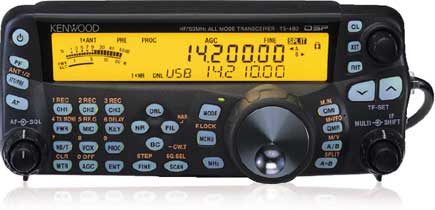Operating an Amateur Radio station - using voice modes
Single sideband
Single sideband (SSB) is the predominant mode for voice transmissions on the HF amateur bands. This is because it gives the most effective communications for each watt of transmitted power and it also uses the spectrum in the most efficient way, when compared with other voice modes such as Amplitude Modulation (AM), Frequency or Phase Modulation (FM, PM) or other methods of transmitting voices via radio signals.
SSB is an amateur radio success story. It was pioneered and popularised by radio amateurs and it took other services many years before they caught up with amateurs. They continued to use old fashioned AM services long after SSB was in common use on the amateur bands.
Tuning into an SSB signal the first time can be confusing, but if you follow some basic rules you will find all you need is some practice.
- First, decide whether the signal you are tuning into is using upper sideband (USB) or lower sideband. (LSB).
- How do you tell? As a guide, amateurs use LSB on frequencies below 10 MHz and USB on all bands above 10 MHz. The only exception to that rule occurs when using satellite translators which is explained further in the section on Satellites. On the 27 MHz CB channels, both LSB and USB can be used, so if you receive those signals with a standard tunable receiver, you will have to try one sideband and then the other if you can't resolve the first option.
- Next, approach the signal from the high frequency side if it's LSB or from the lower frequency side if it's USB.
- As you tune the receiver closer to the signal, you'll hear the voice but it will sound very high pitched. keep tuning until the voice sounds normal.
- When you have tuned in an SSB signal correctly, the voice should sound perfectly normal. Not slightly high or low. No Donald Duck sounds.
- Some radio users tend to always keep the signal sounding slightly high in pitch, saying they can understand the voice better that way. This is fine for receiving, but if you use a transceiver, the other station would hear your voice correspondingly low pitched. If they retune so you sound high, you then hear their voice as low pitched. If you both keep retuning this way you will gradually move right off your original frequency.
- Practice tuning ssb signals until you can do it automatically.
Single sideband is so called because it is a effectively an AM transmission, with the carrier suppressed or cancelled out and the other sideband filtered out or suppressed by the transmitter. The reason for doing this is that firstly the carrier contains no voice information and secondly the two sidebands are a mirror image of each other. Each of them contains the same voice signal. By focussing on one sideband and putting all the transmitter power into that sideband, and also narrowing the bandwidth in receivers to equal the width of one sideband, we get a vast improvement in efficiency and reduced interference.
Next: Operating a station using morse code

